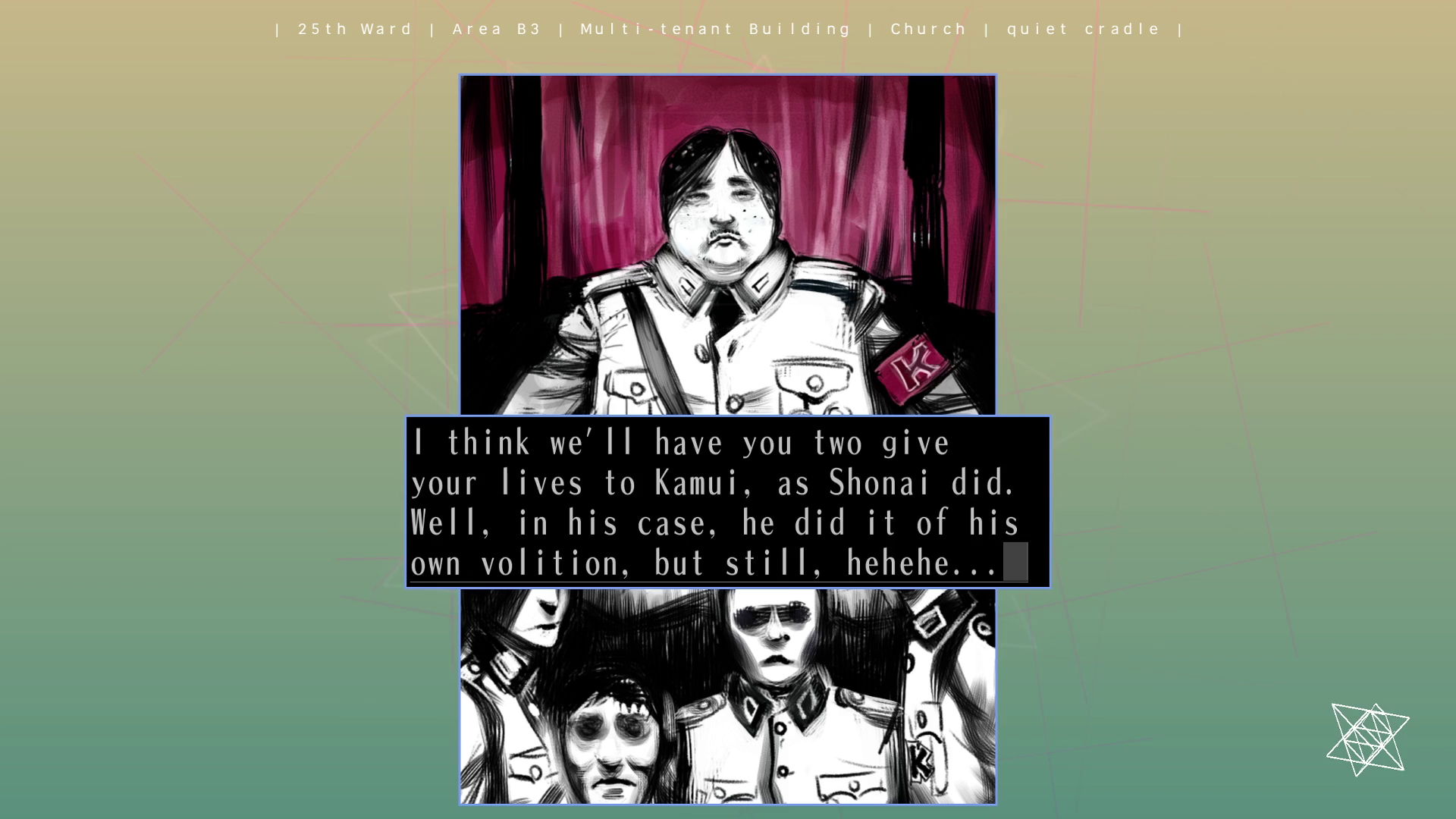Kamui and the far right
Violence as an end in itself, rather than as a means, becomes a fascistic value. Even the admiration for the future and action, and Fujiwara creating cutting-edge abstract art, suggests the fascist Futurists. So far I have taken Kamui to be leftist in attitude: seeking to give a voice to the voiceless and power to the powerless like Uehara, whom the old men cannibalize, or like the Mikumo Boys who seek answers for Yukimura’s crimes. But is this really Kamui’s affiliation?
Even beyond the attempts by the power structure to co-opt and neuter Kamui, or utilize Kamui and Ayame as brainwashed slaves through false revolutionary messages seen in “KamuiDrome” and “LifeCut,” identification as a revolutionary doesn’t necessarily mean Kamui is a positive manifestation of resistance. Far-right radical politics may espouse “revolution” as well. Mere violence and rhetoric in the name of one ideology bleeds readily into others, and totalizing violence has a way of erasing the initial ideological justifications. I recall, in Search for a Method (before I quit reading it!), Sartre’s reflection on an ideology of violence against the bad guys in his naïve days as a student communist (emphasis mine):
“Enthusiastically we adopted all those doctrines which divided men into watertight groups. […] Under the influence of war and the Russian Revolution, we offered violence—only theoretically, of course—in opposition to the sweet dreams of our professors. It was a wretched violence (insults, brawls, suicides, murders, irreparable catastrophes) which risked leading us to fascism; but in our eyes it had the advantage of highlighting the contradictions of reality.”
Within The Silver Case, the vile Nakategawa refers to the old men responsible for the Kamui and Ayame Maspro as “revolutionary patriots” (emphasis mine). Also troubling is that the documentary in “LifeCut” features a man who knows Fujiwara and states, “I believe Kamui feels that if we were able to surpass that bar [of his own standard], we would achieve true perfection. But most people simply don’t understand this. They think his ‘ideals’ are nothing but murder, or some kind of fascism. For better or worse, that’s not exactly incorrect” (emphasis mine).

The Format Kamui who becomes popular among young people proliferates on the precursor to chanboards, already a bad sign, before mutating into the personification of the new millennium. In the popular conception, this figure is not just an assassin defying corruption and authority but an assassin doing so by obedience to the FSO, always identified as the conservative faction against the “radical” TRO/CCO (the TRO is even called the “Extremist revolutionary faction”). There seems to be only the flimsiest correspondence between real-world Japanese political parties and the NGOs-turned-political organizations FSO, TRO, and CCO that might moor them as direct analogues, and so these descriptors are the only evidence of their values.
(Except for Judah, the Kamui believers in “quiet cradle” pictured below dress in Nazi uniforms. Their “top monkey,” Engawa, bears a haircut and mustache suggestive of Hitler. But, for now, I am exclusively considering the Kamui in The Silver Case, not The 25th Ward.)
